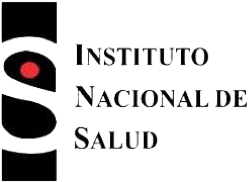Food insecurity: associated variables and issues for public policy
Abstract
Introduction. The validity of the explanations change over time according to the state of demographic, epidemiological and nutritional transitions.
Objective. Five methods were compared to establish the magnitude of food insecurity and related variables.
Material and methods. Four hundred and thirty-two households in Colombia were classified using five methods, including (1) the scale of perceptions of food safety (EPSA), (2) the Latin American and Caribbean scale (ELCSA), (3) the usual intake of energy from the head of household, (4) the usual consumption of energy of all members of the home, and (5) an algorithm based on consumption and status of children. Binomial regression established variables associated with food insecurity.
Results. Insecurity varied between 35.9% and 87.0%. According ELCSA and method 3, households with children have a lower risk of insecurity, 0.51 (95% CI 0.25 to 0.90) and 0.72 (95% CI 0.48 to 0.96). Under the EPSA and ELCSA, increased insecurity is associated with nonpayment of utilities, 1.75 (95%CI: 1.23 to 2.28) and the head of household declared limited access to food, 1.48 (95% CI: 1, 20 to1.68). Sporadic income was associated with the method 3, 1.34 (95% CI 1.04 to 1.53) and method 4,1.32 (95% CI 1.03 to 1.52). Paying rent, 1.12 (95% CI: 1.01 to 1.16), time spent in the municipality, 0.59(95% CI 0.23 to 0.93) and not having sewer, 1.13 (95% CI 1.01 to 1.16) were associated with the food insecurity using method 5.
Conclusions. Since the country has reliable information that is obtained routinely it is not relevant oruseful to use these methods with the purpose of developing social policies.
doi: http://dx.doi.org/10.7705/biomedica.v32i4.766
Downloads
References
Pelletier DL, Olson CM, Frongillo EA. Inseguridad alimentaria, hambre y desnutrición. En: Conocimientos actuales sobre nutrición. Publicación científica y técnica No. 592. Octava edición. Washington, DC: OPS e Instituto Internacional de Ciencias de la Vida; 2003. p. 762-75.
Sen AK. Desarrollo y libertad. Bogotá: Editorial Planeta de Colombia S.A.; 2001. p. 183-98.
Sen AK. El derecho a no tener hambre. Bogotá: Universidad Externado de Colombia; 2002. p. 1-35.
Leisinger KM, Schmitt KM, Pandya-Lorch R. Six billion and counting: Population and food security in the 21st century. Washington, D.C: International Food Policy Research Institute; 2002. p. 57-76.
Del Castillo SE. Observatorio de seguridad alimentaria y nutricional (OBSAN): cinco años de trayectoria, reflexiones 2005-2010. Bogotá: Universidad Nacional de Colombia; 2010. p. 23-50.
Food and Agriculture Organization. The state of food insecurity in the world. Rome: Food and Agriculture Organization of the United Nations; 1999. p. 4-28.
Maxwell S. Food security: A post-modern perspective. Food Policy. 1996;21:155-70. http://dx.doi.org/10.1016/0306-9192(95)00074-7
Wehler C, Scott R, Andeson J. The community childhood identification project: A model of domestic hunger. J Nutr. 1992;24:29S-35S.http://dx.doi.org/10.1016/S0022-3182(12)80135-X
Instituto Colombiano de Bienestar Familiar. Encuesta Nacional de la Situación Nutricional en Colombia. Bogotá: ICBF; 2005.
Instituto Colombiano de Bienestar Familiar. Encuesta Nacional de la Situación Nutricional en Colombia. Bogotá: ICBF; 2010.
Departamento de Planeación Nacional. Política nacional de seguridad alimentaria y nutricional (PSAN). Bogotá: CONPES Social 113. Fecha de consulta: 1 de noviembre de 2011. Disponible en: http://www.minproteccionsocial.gov.co/Documentos%20y%20Publicaciones/POL%C3%8DTICA%20NACIONAL%20DE%20SEGURIDAD%20ALIMENTARIA%20Y%20NUTRICIONAL.pdf.
Willet W. Nutritional epidemiology. 2 edition. New York: Oxford University Press; 1998. p. 50-73.
Margetts BM, Nelson M. Design concepts in nutritional epidemiology. New York: Oxford University Press; 1996. p.123-69.
Levy PS, Lemeshow S. Sampling of populations. Third edition. New York: John Wiley & Sons, Inc.; 1999.
Álvarez MC, Estrada A, Montoya EC, Melgar-Quiñonez H. Validación de escala de percepción de la seguridad alimentaria doméstica en Antioquia, Colombia. Salud Pública Mex. 2006;48:474-81.
Herrán OF, Quintero DC, Prada GE. Seguridad alimentaria; un método alterno frente a uno clásico. Rev Salud Pública. 2010;12:546-57.
Álvarez MC, Estrada A, Montoya S, Melgar-Quiñónez H. Validación de escala de percepción de la seguridad alimientaria doméstica en Antioquia, Colombia. Salud Pública Mex. 2006;48:474-81.
Food and Agriculture Organization. Human energy requirements. Report of a joint FAO/WHO/UNU expert consultation, October 2001. Rome: Food and Agriculture Organization of the United Nations; 2004. p. 11-66.
Instituto Colombiano de Bienestar Familiar. Recomendaciones de ingesta de energía y nutrientes para la población colombiana. Bogotá: ICBF; 2009. p. 51-70.
Nusser SM, Carriquiry AL, Dodd KW, Fuller WA. A semiparametric transformation approach to estimating usual daily intake distributions. J Am Stat Assoc. 1996;436:1440-9.
Carriquiry AL. Estimation of usual intake distributions of nutrients and foods. J Nutr. 2003;133:601S-8S.
Lauritsen J. FoodCalc v. 1.3. Diet, cancer and health project. Denmark: Danish Cancer Society; 1998.
Heredia P, Del Castillo S, Fonseca Z, Chacón O, Herrán OF. Base de datos de la composición nutricional de alimentos y preparaciones: compilación de las Universidades Nacional de Colombia y Universidad Industrial de Santander. Bogotá: Universidad Nacional; 2009.
Departamento de Nutrición de la Universidad Nacional de Colombia. Proceso de estandarización de pesos de modelos para la estimación del tamaño de ración. Informe Técnico. Bogotá: Universidad Nacional; 2009.
Iowa State University. PC-Side, versión 1.02. Iowa: Department of Statistics and Center for Agricultural and Rural Development; 2004.
Hosmer DW, Lemeshow S. Applied logistic regression. 2 edition. New York: John Wiley & Sons, Inc.; 2000.
Long JS. Regression models for categorical and limited dependent variables. New York: SAGE Publications; 1997. p. 148-86.
STATA. Estimation of means, totals, ratios, and proportions for survey data. Stata Technical Bulletins. 1996;6:213-35.
Stata Statistical Software: Release 10.1 Collegue Station, TX: StataCorp LP; 2008.
Jiménez AZ, Prada GE, Herrán OF. Escalas para medir la seguridad alimentaria en Colombia. ¿Son válidas? Rev Chil Nutr. 2012;39:8-17. http://dx.doi.org/10.4067/S0717-75182012000100001
Perali F, Cox TL. Escalas de equivalencia de hogares, desigualdad y pobreza en Colombia. En: Cárdenas M, Lustig N. Pobreza y desigualdad en America Latina. Bogotá: Tercer Mundo Editores; 1999. p. 7-29.
Madrigal F, Martínez H. Manual de encuestas de dieta. Cuernavaca: Instituto Nacional de Salud Pública; 1996. p. 25-50.
Prada GE, Herrán OF, Ortiz R. Patrón alimentario y acceso a los alimentos en familias desplazadas en el municipio de Girón, Santander, Colombia. Rev Panam Salud Pública. 2008;23:257-63. http://dx.doi.org/10.1590/S1020-49892008000400005
Herrán OF, Prada GE. Nutrición y socioeconomía: un estudio en niños pobres. Revista Perspectivas en Nutrición Humana. 2001;5:11-29.
Herrán OF, Prada GE, Quintero DC. Ingesta usual de vitaminas y minerales en Bucaramanga, Colombia. Rev Chil Nutr. 2007;34:35-44. http://dx.doi.org/10.4067/S0717-75182007000100004
Herrán OF, Prada GE, Ardila MF. Ingesta usual de macronutrientes y energía en Bucaramanga, Colombia: análisis de registros de consumo 1998-2003. Rev Chil Nutr. 2007;34:307-19. http://dx.doi.org/10.4067/S0717-75182007000400004
Herrán OF, Prada GE, Patiño GA. Canasta básica alimentaria e índice de precios en Santander, Colombia, 1999-2000. Salud Pública Mex. 2003;45:35-42. http://dx.doi.org/10.1590/S0036-36342003000100005
Some similar items:
- María Isabel Bermúdez-Forero, Maritza Berrío-Pérez, Andrea Magally Herrera-Hernández, Magda Juliana Rodríguez-Rodríguez, Sandra García-Blanco, Guillermo Orjuela-Falla, Mauricio Beltrán, Prevalence of human T-cell lymphotropic virus I and II in Colombian blood donors, 2001-2014: Implications for transfusion safety , Biomedica: Vol. 36 (2016): Suplemento 2, Enfermedades virales
- Angélica María Ramírez, Yesmit Karina Ríos, Néstor Fabián Galvis, Elsie Entrena, Nidia Victoria Mariño, Diana Marcela Rangel, María Alejandra Araque, Darlis Mayerlis Cabarique, Mateo Murillo , Jorge Enrique Gómez-Marín, Seroprevalence and molecular detection of Toxoplasma gondii among donors in a blood bank in Cúcuta, Colombia Introduction: Toxoplasma gondii infection , Biomedica: Vol. 39 No. Supl. 2 (2019): Enfermedades transmisibles en el trópico, agosto
- María Victoria Benjumea, José Hernán Parra, Juan Felipe Jaramillo, How to intervene and prevent stunting of children from homes belonging to the Sisbén in Caldas , Biomedica: Vol. 37 No. 4 (2017)
- Mónica Marcela Jiménez, Jesús Arias, Gabriel Carrasquilla, Seroprevalence of dengue infection in the municipalities of Armenia, Calarcá, La Tebaida and Montenegro in Quindío, 2014 , Biomedica: Vol. 37 No. 1 (2017)
- Estephania Candelo, Gabriela Caicedo, Max Feinstein, Harry Pachajoa, Microcephaly in Colombia before the Zika outbreak: A systematic literature review , Biomedica: Vol. 38 No. Sup. 2 (2018): Suplemento 2, Medicina tropical
- Diana Marcela Echeverry, Juan Miguel Rengifo, Jhon Carlos Castaño, Germán Alberto Téllez, María Mercedes González, Prevalence of Mammomonogamus laryngeus (Strongylida: Syngamidae) nematodes in a bovine slaughterhouse , Biomedica: Vol. 31 No. 3 (2011)
- Nelson Jose Alvis-Zakzuk, Carlos Castañeda-Orjuela, Diana Patricia Díaz, Liliana Castillo, Karol Patricia Cotes, Pablo Chaparro, Ángel José Paternina-Caicedo, Nelson Rafael Alvis-Guzmán, Fernando Pío De la Hoz, Inequalities on mortality due to acute respiratory infection in children: A Colombian analysis , Biomedica: Vol. 38 No. 4 (2018)
- Julián A. Fernández-Niño, Claudia I. Astudillo-García, Laura María Segura, Natalia Gómez, Ángela Skantria Salazar, Juan Hember Tabares, Cristian Andrés Restrepo, Miguel Ángel Ruiz, Myriam Consuelo López, Patricia Reyes, Profiles of intestinal polyparasitism in a community of the Colombian Amazon region , Biomedica: Vol. 37 No. 3 (2017)
- Hollman Miller, Gerzaín Rodríguez, Tungiasis in native Amerindians in Vaupés province: epidemiology, clinical aspects, treatment, and prevention , Biomedica: Vol. 30 No. 2 (2010)
- Guillermo Mora, María Clara Echeverry, Gustavo Enrique Rey, Myriam Consuelo López, Luisa Fernanda Posada, Fabio Aurelio Rivas, Frequency of Trypanosoma cruzi infection in patients with implanted pacemaker , Biomedica: Vol. 27 No. 4 (2007)
| Article metrics | |
|---|---|
| Abstract views | |
| Galley vies | |
| PDF Views | |
| HTML views | |
| Other views | |


























